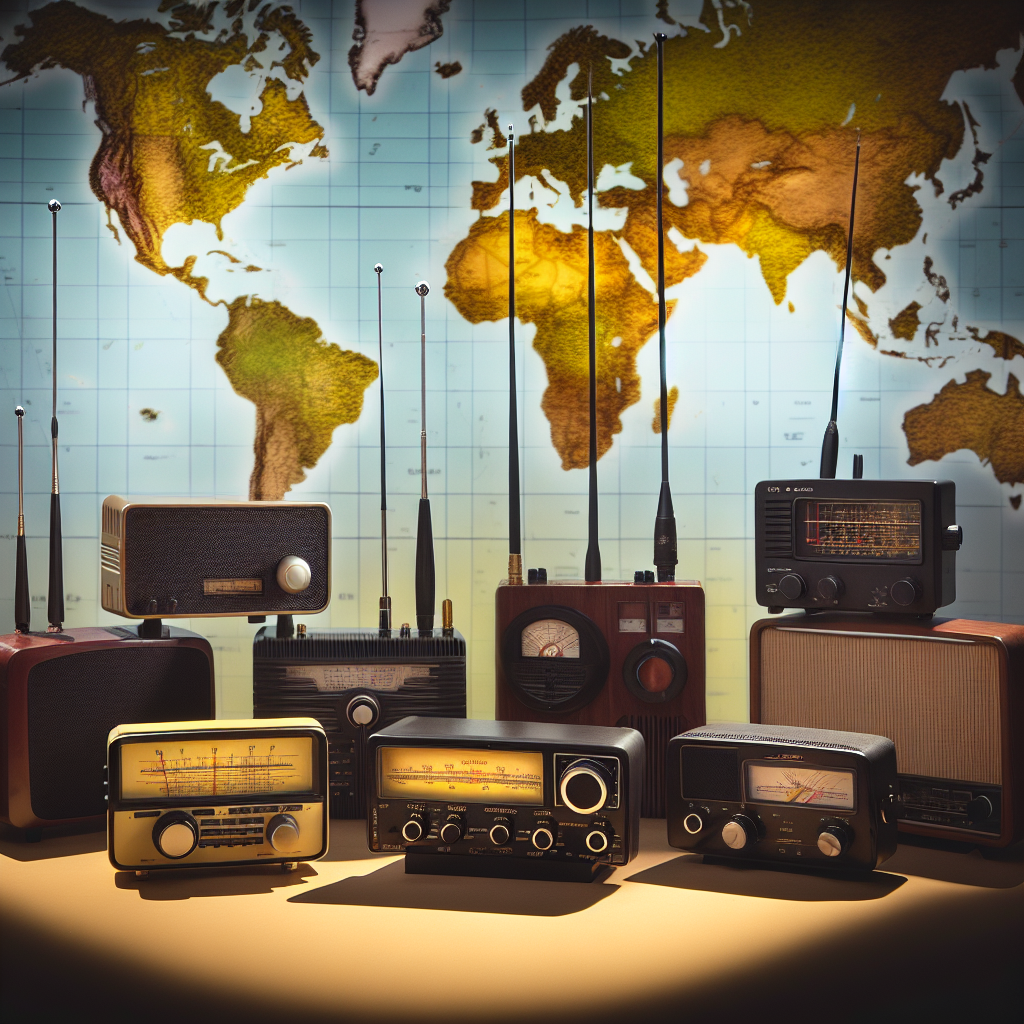Shortwave radio connects distant worlds through the power of radio frequency bands. Once a staple of global communication, it remains a beloved hobby and crucial tool during emergencies. This article delves into the history, technology, and modern uses of this enduring mode of communication.
The History and Essence of Shortwave Radio
High Frequency (HF) radio frequencies, operating typically from 3 to 30 MHz, are pivotal in long-distance communication due to their unique propagation characteristics. Unlike VHF and UHF, HF signals can skip off the ionosphere, allowing them to journey beyond the horizon. This skip phenomenon is influenced by factors such as time of day, solar activity, and atmospheric conditions. The versatility of HF makes it invaluable for international broadcasting, amateur radio, and even military communications. Enthusiasts often engage in DXing—receiving signals from distant stations, demonstrating how HF bands effectively bridge vast distances, connecting users globally.
Understanding High Frequency Propagation
HF radio frequencies encompass the range from 3 to 30 MHz and are pivotal for long-distance communication due to their unique propagation characteristics. Unlike higher frequencies that require line-of-sight, HF signals can refract off the ionosphere, allowing them to travel beyond the horizon. This phenomenon is influenced by factors such as time of day, solar activity, and atmospheric conditions, which dictate signal quality and distance. The ability of HF radio to penetrate rural areas makes it crucial for emergency communications and disaster preparedness, ensuring persistent connectivity. The versatility of HF frequencies continues to be invaluable, especially for DXing and global broadcasts, enriching the shortwave listening experience.
The Role of Amateur Radio Bands
Amateur radio enthusiasts, or “ham” operators, play a significant role in utilizing designated amateur radio bands, which range across various shortwave frequencies. These frequencies not only facilitate personal communication and experimentation but also serve as critical lifelines during emergencies. Hams engage in activities like DXing—receiving distant signals—and participate in contests and community events that enrich the radio hobby. Furthermore, in times of disaster, amateur radio becomes essential for emergency communication, bridging gaps where other communication methods fail. Equipped with analog shortwave radios or advanced SDR shortwave setups, operators can experiment with antennas, enhance signal reception, and actively contribute to local and global networks.
Techniques in Antenna Tuning and Signal Reception
Antenna tuning is crucial in enhancing signal reception, particularly for both portable shortwave radios and larger amateur radio setups. By adjusting the tuning of the antenna to the assigned frequency range, users can significantly improve reception clarity and reduce interference from adjacent frequencies. Proper tuning ensures that the antenna resonates efficiently, allowing it to capture weaker signals, which is essential for DXing and international broadcasts. Different types of antennas, such as dipole or loop antennas, can be fine-tuned for optimal performance, facilitating better emergency communication and reliable reception of global news radio, especially in rural or disaster scenarios.
The Revival in Digital and Portable Shortwave Receivers
The evolution of shortwave radio technology has significantly altered the listening experience, especially with the advent of digital and software-defined radio (SDR) systems. **Digital shortwave receivers** enhance the clarity of AM broadcasts, allowing for precise frequency tuning and improved audio quality. Models like the **Tecsun PL-880** and **Sony ICF-SW7600** exemplify this shift, offering advanced features such as automated frequency scanning and memory storage for quick access to favorite stations.
In contrast, **analog shortwave radios**, like **Grundig’s vintage models**, charm enthusiasts with their simplicity and nostalgic appeal. While they lack digital capabilities, many audiophiles appreciate their straightforward operation. Ultimately, advancements in **SDR technology** bring in more robust capabilities for **DXing** and **global radio broadcasts**, making these modern systems indispensable for serious listeners and emergency communication.
Summary of Key Points
Despite advancements in digital communication, shortwave radio thrives as a beloved hobby and essential tool. Its rich history and versatility ensure it remains relevant, connecting listeners worldwide and offering critical communication in remote and emergency situations.

Leave a Reply
You must be logged in to post a comment.